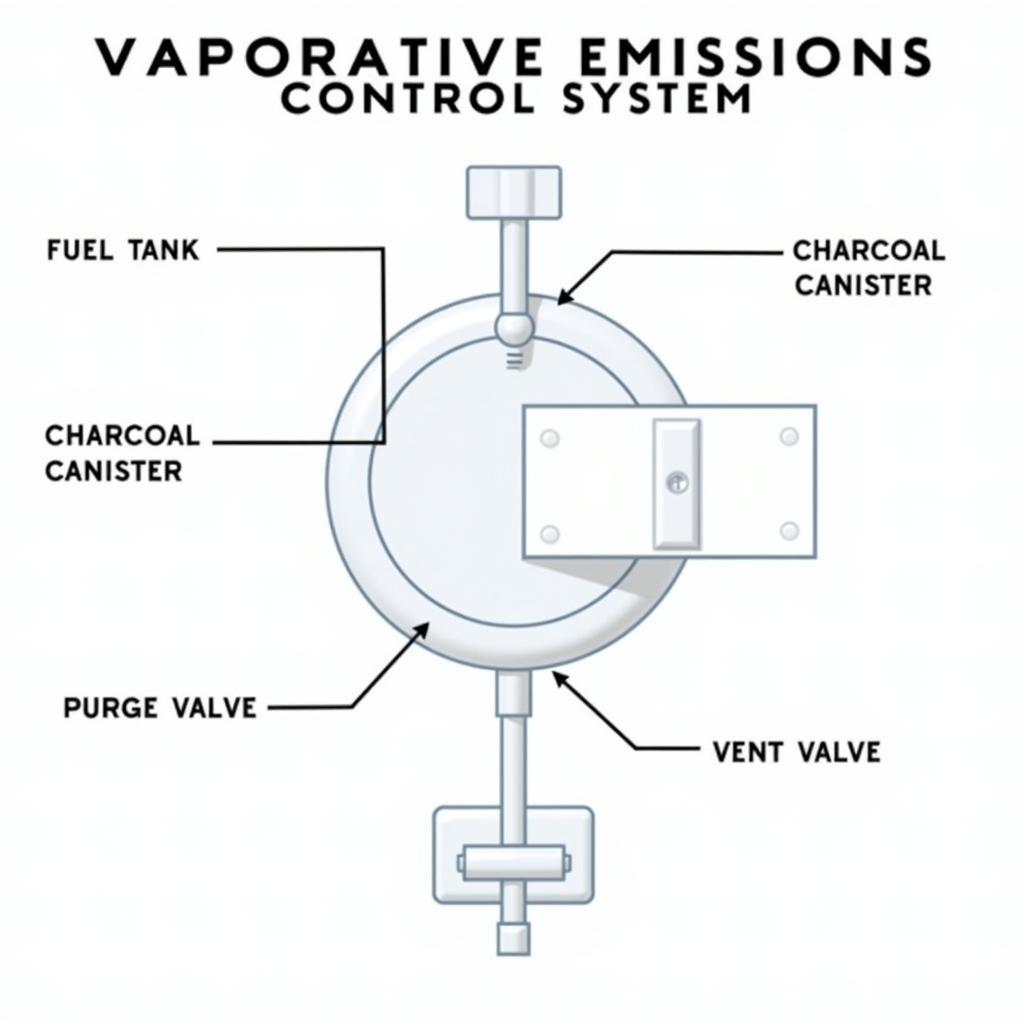You turn the key in the ignition, hoping for a smooth start to your day, but instead, you’re greeted by the ominous glow of the check engine light. After a quick trip to the mechanic or maybe you plugged in your own OBD-II scanner, you’re faced with the cryptic code: P0441. Don’t panic! This code is a common one, and with a bit of knowledge, you can understand what it means and even take steps to address it.
 Car Evap Emissions System
Car Evap Emissions System
Deciphering the Code: What Does P0441 Mean?
P0441 stands for “Evaporative Emission Control System Purge System Flow Fault.” In simpler terms, your car’s computer has detected a problem with the system responsible for preventing fuel vapors from escaping into the atmosphere.
The EVAP System: An Environmental Guardian
Before we dive deeper into P0441, it’s helpful to understand what the EVAP system does. This system plays a crucial role in reducing your vehicle’s emissions and preventing harmful fuel vapors from polluting the air. It does this by capturing gasoline vapors from the fuel tank and temporarily storing them in a charcoal canister. Later, these vapors are purged into the engine to be burned during the combustion process.
Common Causes of P0441
Now that you understand the EVAP system’s role, let’s look at the most common culprits behind the P0441 code:
-
Loose or Damaged Gas Cap: Believe it or not, a loose or damaged gas cap is one of the most frequent causes of this code. It might seem insignificant, but that cap plays a crucial role in maintaining the sealed system needed for proper EVAP operation.
-
Faulty Purge or Vent Solenoid: The purge and vent solenoids are like gatekeepers, regulating the flow of vapors within the EVAP system. If one of these solenoids malfunctions, it can disrupt the system’s pressure balance, triggering the P0441 code.
-
Cracked or Disconnected Hoses: The EVAP system relies on a network of hoses to transport fuel vapors. A cracked, loose, or disconnected hose can create a leak, leading to the code.
-
Malfunctioning Charcoal Canister: Over time, the charcoal canister can become saturated with fuel vapors, reducing its effectiveness. In some cases, the canister itself might be damaged.
Diagnosing P0441: A Step-by-Step Approach
If your check engine light is on and you’ve pulled a P0441 code, here’s a logical approach to diagnosing the problem:
-
Check the Gas Cap: Start with the easiest fix. Make sure your gas cap is securely tightened. If the cap appears damaged or cracked, replace it with a new one.
-
Inspect EVAP System Hoses: Visually examine all hoses connected to the EVAP system, including the lines leading to and from the charcoal canister, purge valve, and vent valve. Look for cracks, loose connections, or signs of damage.
-
Test the Purge and Vent Solenoids: You can test these solenoids using a multimeter to check for proper electrical resistance. Consult your vehicle’s repair manual for the specific resistance values and testing procedures.
-
Inspect the Charcoal Canister: Locating the charcoal canister can vary between vehicle models. Check your owner’s manual for its location. Inspect the canister for any signs of physical damage.
When to Seek Professional Help
While diagnosing a P0441 code can be straightforward, some repairs might require specialized tools or knowledge. If you’re not comfortable working on your car or if your initial diagnosis doesn’t reveal a clear solution, it’s best to consult with a qualified mechanic.
P0441: More Than Just a Check Engine Light
Ignoring a P0441 code can lead to several consequences:
-
Increased Emissions: A malfunctioning EVAP system allows harmful fuel vapors to escape into the atmosphere, contributing to air pollution.
-
Fuel Economy Impact: A leak in the EVAP system can disrupt the air-fuel mixture, potentially leading to reduced fuel efficiency.
-
Further Engine Damage (Rare): While rare, in some cases, a severe EVAP system problem can lead to damage to other engine components.
Conclusion: Tackling P0441 with Confidence
Encountering a P0441 code on your car diagnostic scanner might seem daunting at first, but armed with the information in this article, you can approach the issue with a sense of understanding. Remember, early detection and repair are key to maintaining your car’s performance, fuel efficiency, and environmental responsibility.

Leave a Reply